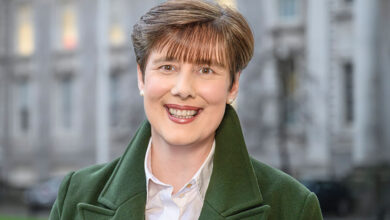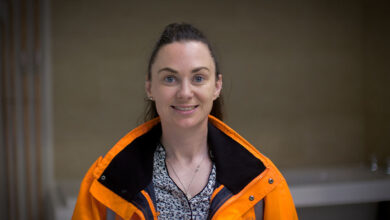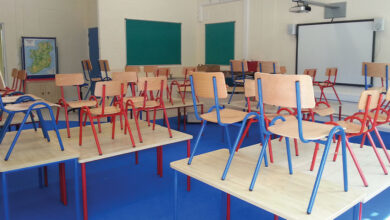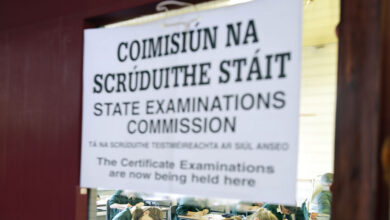The Power of shared service delivery
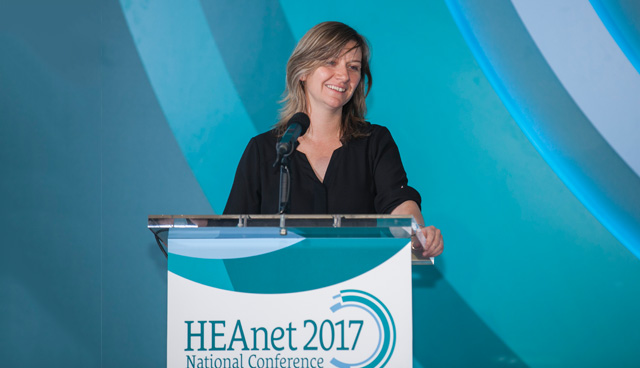

Bringing over 15 years’ worth of leadership experience to the role and having completed her first 100 days as HEAnet’s new Chief Executive, Kerrie Power is poised to build on the National Education and Research Network’s reputation as an exemplar for shared services delivery.
A graduate of Waterford Institute of Technology, Power cut her teeth in a leadership role in her mid-20s. “My boss went on a sabbatical, returned and then said that he didn’t want to be the boss anymore, so I took on his position and was thrown in at the deep-end at a tender age,” she explains. During this time, Power became accustomed to managing budgets and executive level expectations.
Actively pursuing a wide-ranging experience, she began her career as an IT field technician before progressing into technical management to “observe the relationship between the technological side of business, and how it pertains to the commercial end”.
Power previously worked as a regional IT manager for Google in both New York and the EMEA headquarters in Dublin before taking a role as a user operation team lead for Facebook in Dublin. More recently, she completed an MBA and worked in start-ups in Dublin, including Nordeus and YouPass.
Joining HEAnet, Power explains, was about combining her experience and learning. “It’s a new age in that education technology has just scratched the surface of what’s possible. With new impetus on shared services throughout the sector, that is very different when compared with individualistic approaches to technology.”
Identifying common denominators, locating the areas in which it makes sense to share technology and developing these through innovation is something, which Power asserts, HEAnet does very well. “I love challenges and solving important real world problems. Coming from a ‘move fast and break things’ environment into the education sector is in itself exciting for me,” she adds.
First 100
Spending her first 100 days acclimatising and learning about the new environment in order to understand and best approach the challenges and plan for the strategy ahead; Power emphasises that her current priority is “to learn”.
“I think that as soon as you believe that you have it all figured out then you’re going to fail, because within tech, everything is in a constant state of flux; that’s the only thing you can guarantee. What you knew yesterday may not apply tomorrow, so it’s a constant learning process. That’s going to be a focus for me and always will be,” she emphasises.
Praising her predecessor, John Boland, Power stresses: “What HEAnet has done is phenomenal. We’ve taken on so many opportunities and delivered so much that we’re clearly value for money. What I don’t want to do is to change what’s working. Our core competency is the network; we’re known for it and we have the Uptime and SLAs [service level agreements] to prove it. Last quarter the vast majority of our network services were at 100% Uptime and any that dropped below that were at 99.98%, so it’s phenomenally high, as is our client satisfaction.”
Visiting clients during her first 100 days, Power describes the feedback she received as being “resoundingly positive”. “Where we can improve, is the ability to have non-goals; what we’re not going to do. In other words, stay focused on our core competencies and improve on these: that’s where I see opportunity and that’s what I’d like to develop further. Take us back to what we do brilliantly and grow from there,” she articulates.
Ambition
Power is evidently ambitious and sets her sights on a process of self-reflection and improvement. “I would like us to challenge the status quo,” she submits. Regarding opportunities in the research sector, the new Chief Executive outlines: “There is a gap we can fill with enhanced focus on research. Again, coming from a very youthful and innovative environment where all ideas are explored, I believe that the people who can solve a lot of the problems are within the universities and colleges: they’re the students; they’re the PhD candidates. So, how do we harness that energy to come up with real world solutions to problems that we haven’t even begun to think about?”
Situated somewhere in between research, education and innovation, HEAnet is in a position to capitalise on this, though Power notes: “I think the true meaning of ‘shared services’ is what can be totally shared and this is applicable across the entire sector.” This means understanding common goals and avoiding potential pitfalls which could appear if attempting to solve problems for one or two institutions in isolation.
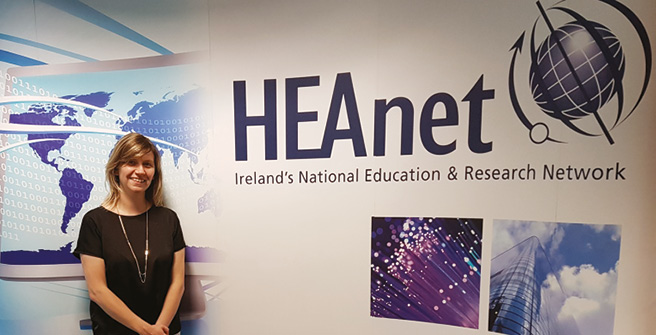
Power believes that these opportunities exist “in the area of common, repeatable and shareable solutions, such as ICT security”. While cybersecurity is now a significant factor for education and research bodies, not everyone has time to sift through policies that need to be written, audits that need to be done or testing that needs to happen. “Every institute does their very best and does what they can, but HEAnet can come in and help across the whole sector because these things aren’t unique – everyone needs the same kind of testing, everyone needs similar policies and then they can be tweaked individually,” she says.
Collaboration
On a similar plain, Power recognises opportunities for collaboration with organisations such as Science Federation of Ireland – developing a deeper understanding of common challenges that can be solved through partnership.
She is also cognisant of the opportunity made possible by the many commercial entities who are also interested in harnessing research energies and is open to facilitating such collaboration. “I think collaboration with industry is quite important. There’s no point in us reinventing the wheel, so if someone has done something incredibly well, we can harness this knowledge rather than trying to rebuild it ourselves,” she outlines.
“I want Ireland to realise its potential through technology in education. I’d like HEAnet to be the vehicle to achieve that.”
“HEAnet are uniquely positioned to negotiate on behalf of the education and research sector as a whole. Take cloud services for example – in collaboration with GÉANT and our education and research peers across Europe, we have brokered framework agreements for Microsoft Azure, AWS and other cloud solutions at the very best prices available in the marketplace.
“So, that’s where I think we should be partnering with the commercial world: finding out what is being developed, how it can be used and how it can be leveraged to give opportunities for innovation. Commercial organisations are already invested in what the next big thing is, what the sector wants and if they can work with us in developing it.”
Vision
Looking to the future, Power wants to ensure that HEAnet continues to develop new services with sector-wide potential. “I’d like to align more closely with the National Shared Services Office’s strategy to ensure that we are incentivising the use of our services so that they make sense, are in demand and can be centralised,” she says.
“I’d also love to see us doing more with schools. We do a lot there already with HEAnet infrastructure delivering connectivity for 4,000 primary and post-primary schools, the latter often-reaching speeds in excess of 100 Mbps. However, if you think about the school-going age; they’re way ahead of us when it comes to technology and yet when they go into schools they can be quite far behind in some cases. I want us to help schools develop technology and innovation to a level comparable with home environments – it will enhance learning.”
Speaking on her appointment to the position, she expresses a catching sense of enthusiasm: “As a woman in technology, it’s a great feeling to build on a great legacy and take it forward. We have a very talented team and I want that to be acknowledged. The team that I’m inheriting are gold, so it’s up to me to foster and develop on that. I’m very lucky.”
Concluding the discussion, Power summarises her vision: “I want Ireland to realise its potential through technology in education. I’d like HEAnet to be the vehicle to achieve that.”

